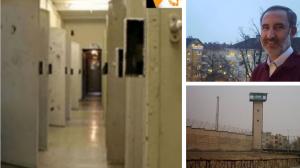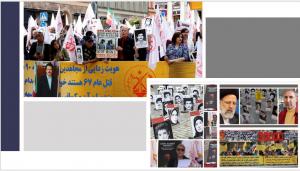(Video) Iran: Ex-prisoner Testifies at Hamid Noury’s Trial in Sweden
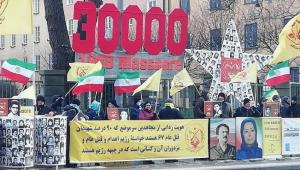
Monday, January 24, marked the sixty-first session of the trial of Hamid Noury, one of the regime’s henchmen. Nouri is being tried for his role in the 1988 massacre of over 30,000 Iranian political prisoners, mostly from Mujahedin-e Khalq (MEK).
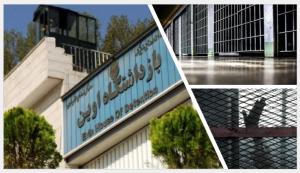
Immediately after my arrest, I was taken to ward 209 of Evin prison and tortured until dawn,” Atyabi told the court, adding, “I spent a year and a half in prison before being sentenced. They ultimately sentenced me to 10 years in prison.”
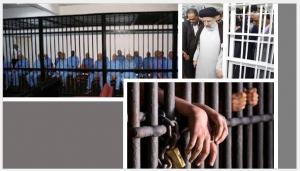
The 1988 massacre began in late July, following a fatwa by the regime’s then-Supreme Leader, Ruhollah Khomeini, who had ordered the mass killing of all MEK members. The regime officials executed political prisoners including Marxists.
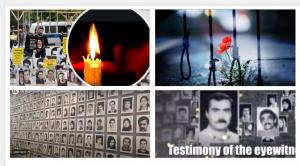
“Death Commissions,” consisting of four officials, were tasked with implementing Khomeini’s order. The Iranian regime’s current president, Ebrahim Raisi, was a member of Tehran and Karaj’s death commissions.
“They brought a truck so they could load more bodies into it,” he told the prosecutor, adding that it was not a regular refrigerator truck.
Monday, January 24, marked the sixty-first session of the trial of Hamid Noury, one of the regime’s henchmen. Nouri is being tried for his role in the 1988 massacre of over 30,000 Iranian political prisoners, mostly members and supporters of Iran’s leading opposition group, Mujahedin-e Khalq (MEK).
Atyabi was arrested in 1983 for supporting the Tudeh (Communist) Party of Iran after the group was banned from political activities in Iran. Immediately after my arrest, I was taken to ward 209 of Evin prison and tortured until dawn,” Atyabi told the court, adding, “I spent a year and a half in prison before being sentenced. They ultimately sentenced me to 10 years in prison.”
The prosecutor asked Atyabi about seeing the guards taking bodies of executed political prisoners away from Gohardasht prison, where he was transferred to shortly before the 1988 massacre.
“They brought a truck so they could load more bodies into it,” he told the prosecutor, adding that it was not the regular refrigerator truck. Its roof was open.
They had urgently brought this heavy load truck since the bodies exceeded the capacity of two refrigerator trucks I had seen coming to prison the previous two days.”
“On July 30, we were in the second-floor sub-section, above the MEK supporters’ cell. At midnight, we suddenly heard a strange voice. It was the sound of dropping something in a place. Like dropping gas containers in a truck,” Atyabi said.
“Then, to see what was happening, we went to the end of the ward. We had a better view from the bathroom window. What I saw was a light green refrigerator truck. This truck had come to the back, it was attached to Hosseinieh, and we could see the front of it and part of its refrigerator. We could not see what was being loaded in the truck.
Hosseinieh was a large hall in Gohardasht prison where prisoners were hanged in groups of 10 to 12.“That day, I saw the most horrible scene in my life that still haunts me to this day.
Through the window, I saw the two guards going on the top of the truck. I could clearly see them moving something to free up some space. Suddenly, I realized they were moving bodies. They were holding to limbs of dead bodies, moving them around,” Atyabi told the court as a part of his shocking testimony on Monday.
“For 12 consecutive nights, I saw a refrigerator truck and two guards for five nights. Imagine the noise of dropping something in a metal container. I heard the sound until the truck was filled with layers of bodies,” Atyabi added.
The 1988 massacre began in late July, following a fatwa by the regime’s then-Supreme Leader, Ruhollah Khomeini, who had ordered the mass killing of all MEK members. Later, the regime officials executed hundreds of political prisoners affiliated with other groups, including Marxists.
The so-called “Death Commissions,” consisting of four officials, were tasked with implementing Khomeini’s order. The Iranian regime’s current president, Ebrahim Raisi, was a member of Tehran and Karaj’s death committee.
The “Death Commission” only asked if the prisoner still supported the MEK. A positive answer meant execution. At the time, Nouri was among the regime’s torturers in Gohardasht prison, Karaj city. Noury and other regime’s torturers seized every opportunity to harass prisoners.
“Whenever we went to the prison yard, we could hear other prisoners’ cries under torture and the sound of flogging. These voices paralyzed us. Once I heard two prisoners who cried ‘henchmen, stop!’” Atyabi said. Many prisoners committed suicide due to the regime’s inhumane tortures, he added. “Another terrible incident was the suicide of a prisoner.
We suddenly saw a prisoner jumping out of the window. We were wondering how he did this. We couldn’t understand whether he attempted to break from prison or he committed suicide,” Atyabi said.
Before going to trial, some Marxist prisoners could establish connections with the MEK prisoners in the adjacent cells through morse code.“Mohammad Ali Beh-Kish and Hassan Mohamad Zadeh succeeded in establishing a connection with the cell [of MEK prisoners] through morse code. They told us they were taking them for execution and gave their names to my two cellmates as Beh-Kish and Mohammad Zadeh. We never heard of them again,” he said.
On Monday, simultaneous with Noury’s trial, the MEK supporters and family members of victims continued their rally outside of the courthouse. They urged the international community to hold the Iranian regime and its criminal leaders like Raisi accountable.
It is worth noting that the court proceeding was transferred to Albania in November on the orders of the judge so that the MEK members residing at Ashraf 3 could testify.
Shahin Gobadi
NCRI
+33 6 51 65 32 31
email us here
Iran’s regime is promoting the State Security Forces (SSF) to the level of the Revolutionary Guards (IRGC) and the army.
Legal Disclaimer:
EIN Presswire provides this news content "as is" without warranty of any kind. We do not accept any responsibility or liability for the accuracy, content, images, videos, licenses, completeness, legality, or reliability of the information contained in this article. If you have any complaints or copyright issues related to this article, kindly contact the author above.

